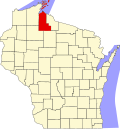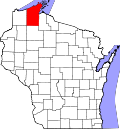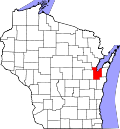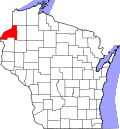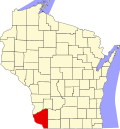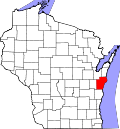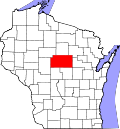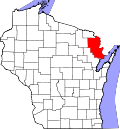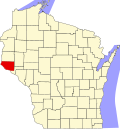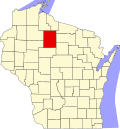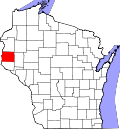| Counties of Wisconsin | |
|---|---|
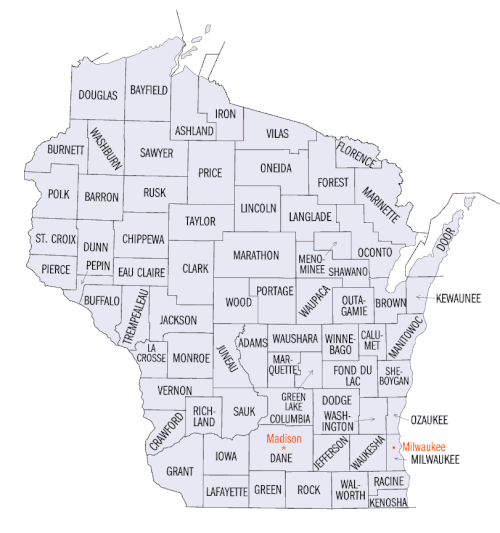 | |
| Location | State of Wisconsin |
| Number | 72 |
| Populations | 4,286 (Menominee) – 924,740 (Milwaukee) |
| Areas | 231.98 square miles (600.8 km2) (Pepin) – 1,544.91 square miles (4,001.3 km2) (Marathon) |
| Government | |
| Subdivisions |
|
There are 72 counties in the US state of Wisconsin. The land that eventually became Wisconsin was transferred from British to American control with the 1783 signing of the Treaty of Paris. [1] It was an unorganized part of the Northwest Territory until 1802 when all of the land from St. Louis north to the Canadian border was organized as St. Clair County. [1] When Illinois was admitted to the union in 1818, Wisconsin became part of the Territory of Michigan and divided into two counties: Brown County in the northeast along Lake Michigan and Crawford County in the southwest along the Mississippi River. [1] Iowa County was formed in 1829 from the Crawford County land south of the Wisconsin River. [1] Brown County's southern portion was used to form Milwaukee County in 1834. [1] The state of Wisconsin was created from Wisconsin Territory on May 29, 1848, with 28 counties.
Contents
- Governance
- List of counties
- Renamed counties
- Proposed counties
- See also
- References
- Further reading
- External links
The most populous county in the state is Milwaukee County at 924,740 people at the 2024 Census estimate. [2] The county with the least population is Menominee County with 4,286 residents; the Menominee Indian Reservation is co-extensive with the county. [2] Pepin County is the smallest in area, with 231.98 square miles (600.8 km2); Marathon is the largest, having 1,544.91 square miles (4,001.3 km2). [2]
The Federal Information Processing Standard (FIPS) code, which is used by the United States government to uniquely identify states and counties, is provided with each entry. [3] Wisconsin's code is 55, which when combined with any county code would be written as 55XXX. The FIPS code for each county links to census data for that county. [4]

